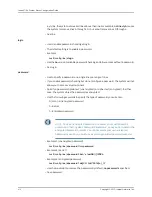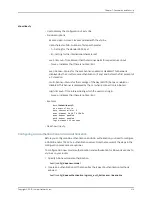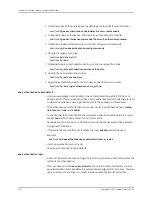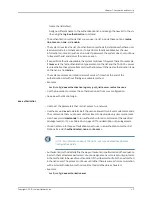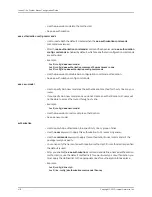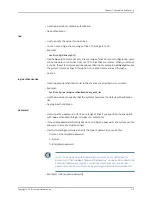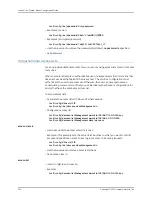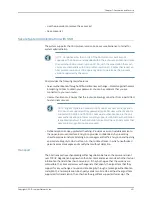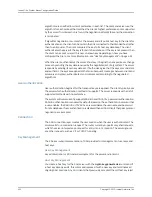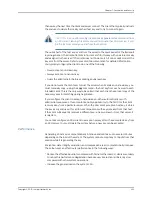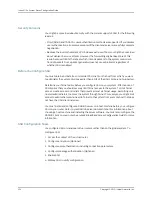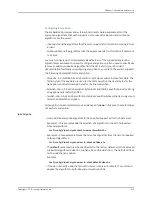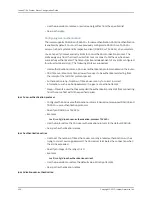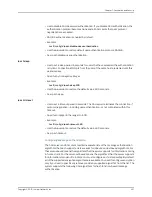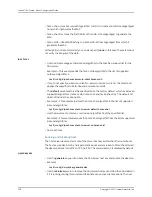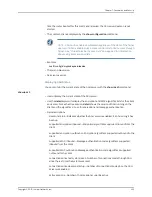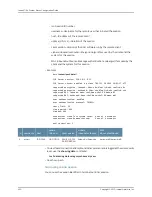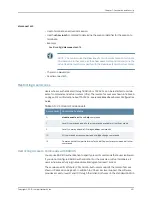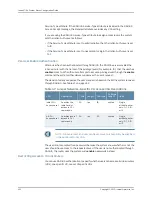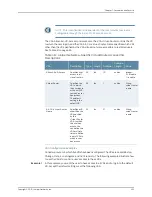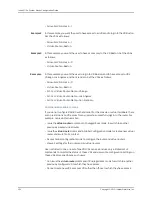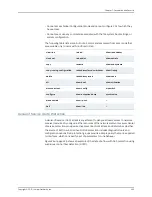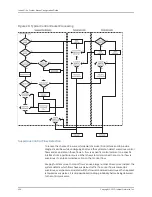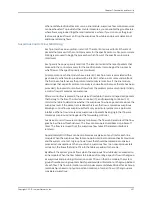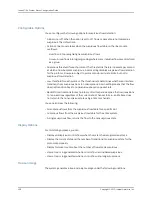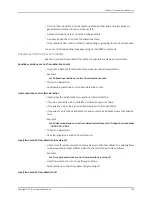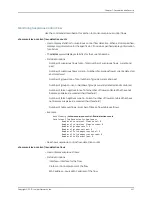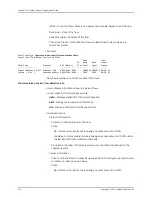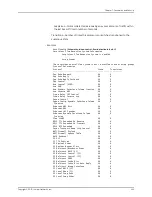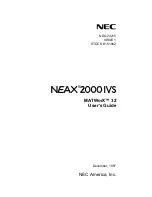
•
hmac-sha1—Uses Secure Hash Algorithm 1 (SHA-1) to create a 160-bit message digest
from which it generates the MAC.
•
hmac-sha1-96—Uses the first 96 bits of the SHA-1 message digest to generate the
MAC.
•
hmac-md5—Uses MD5 hashing to create a 128-bit message digest from which it
generates the MAC.
Although it is not recommended, you can also specify
none
. In this case, the system does
not verify the integrity of the data.
ip ssh mac
Use to add a message authentication algorithm to the specified support list for the
SSH server.
•
Example 1—This example adds the hmac-md5 algorithm to the list of supported
outbound algorithms.
host1(config)#
ip ssh mac server-to-client hmac-md5
•
If you to not specify a direction (client-to-server or server-to-client), the command
applies the algorithm to both inbound and outbound lists.
•
The
default
version restores the specified list to the factory default, which includes all
supported algorithms (hmac-md5, hmac-sha1, and hmac-sha1-96). The default list
does not include the
none
option.
•
Example 2—This example restores the hmac-sha1 algorithm to the list of supported
inbound algorithms.
host1(config)#
ip ssh mac client-to-server default hmac-sha1
•
Use the
no
version to remove or exclude an algorithm from the specified list.
Example 3—This example removes the hmac-sha1 algorithm from the list of supported
inbound algorithms.
host1(config)#
ip ssh mac client-to-server no hmac-sha1
•
See ip ssh mac.
Enabling and Disabling SSH
The SSH server daemon starts only if the server host key exists when the router boots.
The host key resides in NVS and is persistent across system reboots. After it has started,
the daemon listens for traffic on TCP port 22. The server daemon is disabled by default.
crypto key dss
•
Use the
generate
keyword to create the SSH server host key and enable the daemon.
•
Example
host1(config)#
crypto key generate dss
•
Use the
zeroize
keyword to remove the SSH server host key and stop the SSH daemon
if it is running. Issuing this command terminates any active client sessions. The next
Copyright © 2010, Juniper Networks, Inc.
428
JunosE 11.3.x System Basics Configuration Guide
Summary of Contents for JUNOSE 11.3
Page 6: ...Copyright 2010 Juniper Networks Inc vi...
Page 8: ...Copyright 2010 Juniper Networks Inc viii JunosE 11 3 x System Basics Configuration Guide...
Page 24: ...Copyright 2010 Juniper Networks Inc xxiv JunosE 11 3 x System Basics Configuration Guide...
Page 32: ...Copyright 2010 Juniper Networks Inc 2 JunosE 11 3 x System Basics Configuration Guide...
Page 146: ...Copyright 2010 Juniper Networks Inc 116 JunosE 11 3 x System Basics Configuration Guide...
Page 166: ...Copyright 2010 Juniper Networks Inc 136 JunosE 11 3 x System Basics Configuration Guide...
Page 432: ...Copyright 2010 Juniper Networks Inc 402 JunosE 11 3 x System Basics Configuration Guide...
Page 488: ...Copyright 2010 Juniper Networks Inc 458 JunosE 11 3 x System Basics Configuration Guide...
Page 524: ...Copyright 2010 Juniper Networks Inc 494 JunosE 11 3 x System Basics Configuration Guide...
Page 554: ...Copyright 2010 Juniper Networks Inc 524 JunosE 11 3 x System Basics Configuration Guide...
Page 566: ...Copyright 2010 Juniper Networks Inc 536 JunosE 11 3 x System Basics Configuration Guide...
Page 588: ...Copyright 2010 Juniper Networks Inc 558 JunosE 11 3 x System Basics Configuration Guide...
Page 613: ...PART 3 Index Index on page 585 583 Copyright 2010 Juniper Networks Inc...
Page 614: ...Copyright 2010 Juniper Networks Inc 584 JunosE 11 3 x System Basics Configuration Guide...
Page 632: ...Copyright 2010 Juniper Networks Inc 602 JunosE 11 3 x System Basics Configuration Guide...

